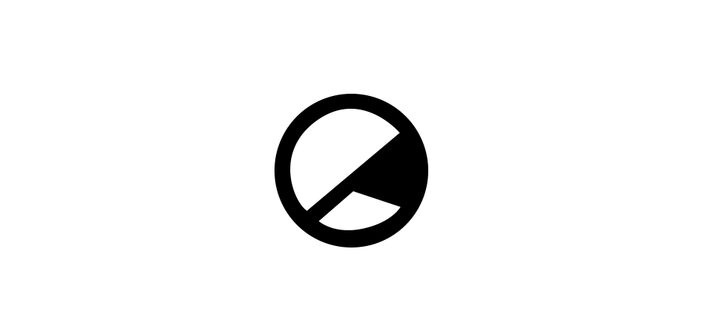Theatrically, The Cursed Child is pure brilliance, both magic and stage show; even if, at points, the plot does feel slightly gimmicky.
-
8
Disclaimer: This review is in large part spoiler free; but if you want to know absolutely nothing, including what J.K. herself has put out there, click away now!
The theatre always seemed a peculiar medium for J.K. Rowling to express the eighth part of Harry Potter’s story. After hugely successful books and films, placing Harry on the stage was a gamble and controversial move for the universally-adored author. Having finally watched the play, I now understand that there is simply no other medium for Harry Potter and the Cursed Child. At the same time it directly inherits of the joys of the Potter series, but is also a departure into something new and fresh.
The Palace Theatre is a magical venue. I was perched high in the Balcony, two rows from as far back as you can be, but still had a great view of the stage. You may think Harry and co look a bit small, but Cursed Child draws you in so much that you could be a mile away and still not care about anything other than what is unfolding on stage. It’s that kind of fast-paced narrative; there’s no pause to breathe between scenes, no chance to regain your composure after each breathtaking twist. It’s in the long build-ups and intervals surrounding the acts that you get a chance to really admire the venue, a majestic choice that rivals Hogwarts for grandeur.
The plot feels like it’s been plucked from every fans’ dream of “what happened next”. Though I won’t go into details, the story, developed by J.K. Rowling, Jack Thorne and John Tiffany, at times feels gimmicky, like fan-fiction. The script’s brilliance is in the niche, everyday conflicts, away from details and oddities of Rowling’s wizarding universe. The relationships between father and son, between husband and wife, and between best friends; that’s what really makes Cursed Child shine.Sam Clemmett and Anthony Boyle steal the show, shining brighter than any of the theatre veterans associated with the play. Clemmett’s portrayal of Albus is gritty and painstakingly realistic, the boy in the shadow of so many great men, including his famous father and those he is named for. Boyle as Scorpius is perhaps even more brilliant, as the product of a family loathed by so many, a boy grieving for his mother. He’s the underdog we all love to root for.
Jamie Parker is enigmatic as the tortured Harry Potter, unable to escape his past as ‘The Boy Who Lived’. The parallels between him and Albus impact heavily on the drama, as both spend the majority of the play being brattish and dislikeable, only to have ‘moments of reckoning’. A surprising powerful performance comes from Poppy Miller as Ginny Potter, whose role in Cursed Child is far more significant than in any of the books. A previously unexplored parallel between her and Draco Malfoy (Alex Price) is a delight for the biggest HP fans – in one powerful scene, they both observe that they both grew up isolated and lonely, jealous of the strong friendship between Harry, Ron and Hermione. Of course, this is the first time we’re not seeing the Potter universe through Harry’s rounded glasses, and due to Harry’s rather self-obsessed perspective, characters like Ginny and Draco that previously felt quite two-dimensional flourish in this new narrative. Though Noma Dumezweni gives a strong performance, she doesn’t feel like the Hermione we know and love. Paul Thornley is largely comic-relief as Ron, though he is side-splittingly funny.The true stars of the show, however, are behind the curtain. The music is breathtaking, ramping up a stifling atmosphere you just don’t get when you read the script – I’m sure I’m not alone in saying I’m dying for Imogen Heap to release it as a downloadable soundtrack. The special effects of the performance are unbelievable, making Cursed Child at points feel more like a magic show than a piece of theatre. Duelling, flying characters and creatures, and a certain Polyjuice Potion scene (#KeepTheSecrets) got audible gasps from the disbelieving audience, myself included. The overall aesthetic of the stage is a mixture of Victorian industrial minimalism, and also gothic grandeur made to match the splendour of the theatre itself. One particular lighting effect feels impossible, though I refuse to say anymore, so you can experience the mindblowing effect for yourself.
I do have my reservations; certain characters have far from enough stage time (Ron, Rose Granger-Weasley, and certain villains I won’t reveal), and the second half does feel generally rushed, with excessive story packed into the running time. Its gimmicky twists-and-turns, the details of which (you guessed it) I can’t reveal, feel more like fanfiction than J.K. Rowling canon. Otherwise, Harry Potter and the Cursed Child shines bright as the best thing in theatre right now, and a successful off-shoot of the 21st century’s best cultural franchise.
Harry Potter and the Cursed Child, Parts I & II, is at the Palace Theatre for the foreseeable future. Currently, the performance is fully booked until December 2017, though you can buy the book of the script, which was published in July, from all good bookshops.



![Poppy Miller as Ginny Potter is one of the show's unsung heroes [Credit: Manuel Harlan]](http://content.theedgesusu.co.uk/wp-content/uploads/2016/10/harry-potter-cursed-child-5-300x200.jpg)



1 Comment
Can’t wait to see it!!! Thank you for a great review that didn’t ruin things for me! 😉